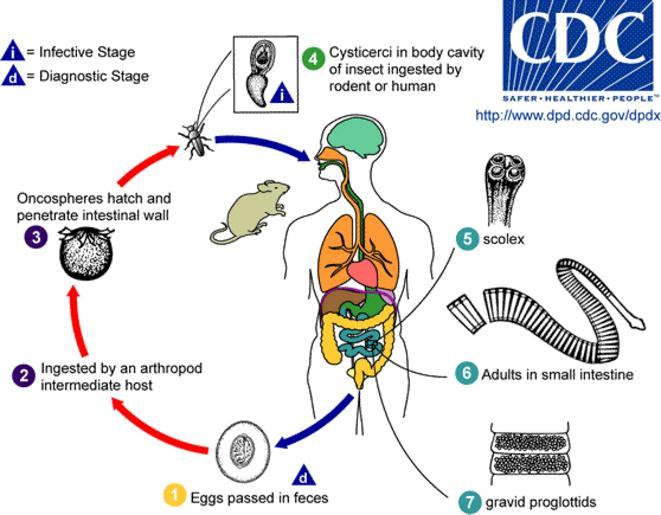MAKE A MEME
View Large Image

| View Original: | H_diminuta_LifeCycle.gif (558x435) | |||
| Download: | Original | Medium | Small | Thumb |
| Courtesy of: | commons.wikimedia.org | More Like This | ||
| Keywords: H diminuta LifeCycle.gif Eggs of Hymenolepis diminuta are passed out in the feces of the infected definitive host rodents man The mature eggs are ingested by an intermediate host various arthropod adults or larvae and oncospheres are released from the eggs and penetrate the intestinal wall of the host which develop into cysticercoid larvae Species from the genus Tribolium are common intermediate hosts for H diminuta The cysticercoid larvae persist through the arthropod's morphogenesis of adulthood H diminuta infection is acquired by the mammalian host after ingestion of an intermediate host carrying the cysticercoid larvae Humans can be accidentally infected through the ingestion of insects in precooked cereals or other food items and directly from the environment e g oral exploration of the environment by children After ingestion the tissue of the infected arthropod is digested releasing the cysticercoid larvae in the stomach and small intestine Eversion of the scoleces occurs shortly after the cysticercoid larvae are released Using the four suckers on the scolex the parasite attaches to the small intestine wall Maturation of the parasites occurs within 20 days and the adult worms can reach an average of 30 cm in length Eggs are released in the small intestine from gravid proglottids that disintegrate after breaking off from the adult worms The eggs are expelled to the environment in the mammalian host's feces PD-USGov Hymenolepis diminuta Parasites CDC lifecycles Life cycles of cestodes | ||||